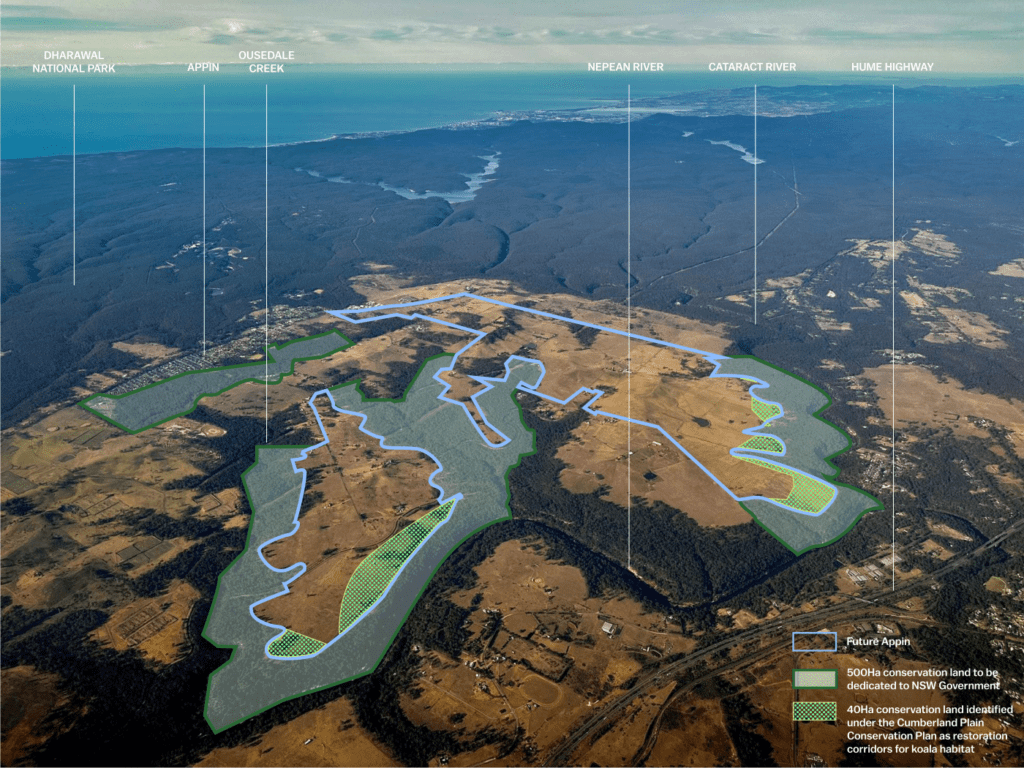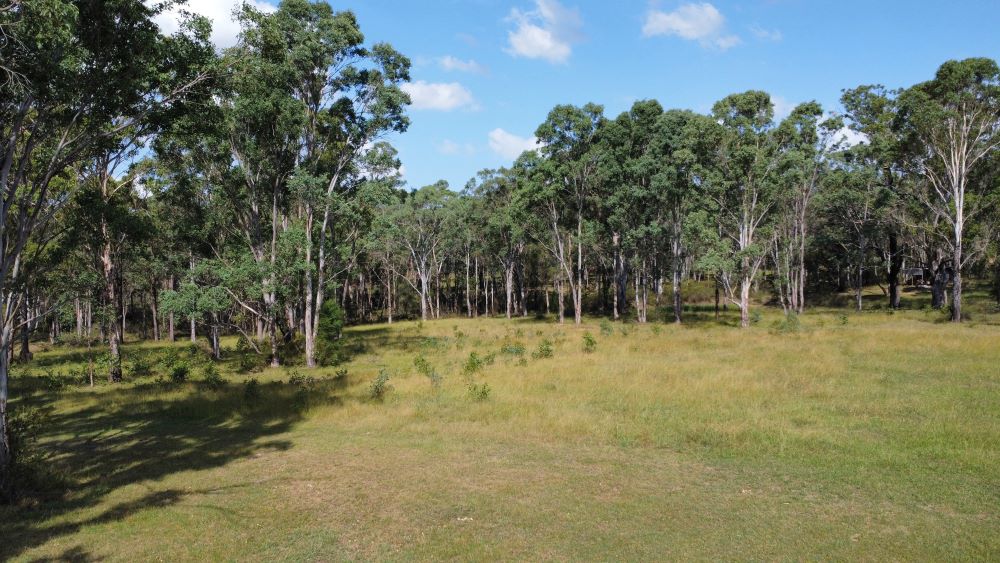
Walker Corporation has announced its commitment to a major long term conservation plan at Future Appin that will include five million square metres of conservation land dedicated back to the people of NSW.
A revegetation program for tens of thousands of new trees to be planted in and around Future Appin communities, helping to protect the local koala population, is also part of the commitment.
The recent approval of the Cumberland Plain Conservation Plan will allow Walker to finalise their voluntary planning agreement with the NSW Government to dedicate important koala corridors within Future Appin, ensuring the ongoing protection of valued biodiversity.
The revegetation effort will be spread across a vast 400,000 square metres of Walker-owned land over the coming years.
This will add to the five million square metres of conservation land to be dedicated by Walker.
All up, an area of bushland the size of 720 football fields will be preserved for future generations and koala feed habitat.
The Walker conservation and revegetation program will be guided by a vegetation management plan that is being developed in consultation with ecological experts and Wollondilly Shire Council.
The company says its commitment aligns with the objectives of the NSW Government’s Cumberland Plain Conservation Plan, which aims to protect important biodiversity, including threatened plants and animals while supporting the delivery of housing, jobs and infrastructure in the region.
The Walker conservation and revegetation program has also been designed to meet the NSW Chief Scientist’s recommendations for protecting koalas in the Cumberland Plain, including undertaking revegetation and restoration as soon as possible to allow vegetation time to establish and grow, widening koala corridors and installing koala fencing.
Walker senior development manager, Amanda McGuirk, said revegetation and ecological restoration experts Habitat Solutions has been engaged to work with Walker and Wollondilly Council to deliver the revegetation program.
“This is an important step to ensuring koalas are protected by revegetating bushland and widening existing corridors, in an area previously used as intensive agriculture land for decades,” Ms McGuirk said.
“The selected revegetation areas have been specifically positioned in areas next to existing bushland on the banks of the Nepean and Cataract Rivers helping to bolster and restore corridors.
“Some of these areas are already starting to naturally regenerate and we look forward to working closely with Wollondilly Shire Council, the State Government and local groups to achieve positive outcomes over the coming years.”

Habitat Solutions ecologist, William Thurston, said the first stage of the revegetation program involves planting over 20 varieties of native, endemic plants, including koala feed trees.
“Habitat Solutions is pleased to be working on this revegetation program. The land we’ll be working on is degraded after years of agricultural use and it will be exciting to return it back to its natural state,” Mr Thurston said.
“We’ve surveyed the surrounding bushland and made recommendations for what should be planted, including a mix of larger potted plants and smaller saplings.”
Walker also collected thousands of native plant seeds from the Appin area in May last year, which are being germinated and cared for by the Robin Davies Wollondilly Community Nursery.
On maturity, the plants will be made available to local Wollondilly Shire residents to plant.
Walker’s Future Appin will see the conservation and protection of five Million square metres of conservation land along the Nepean and Cataract River corridors, Ousedale Creek corridor and Elladale and Simpson Creek corridor.
Planting more trees adds to Walker’s commitment to sustainability alongside delivering much needed housing for families, with Walker dedicated to implementing the Wilton Greenfield Housing Code for Future Appin.
“This will deliver greener, cooler streets with a target of 40 percent tree canopy, reducing the urban heat island effect,” Ms McGuirk said.
“Homes will be built in line with the latest sustainability codes, with lighter coloured roofs, and increased space for plants and trees.”

What a great example of developers acting for the benefit of the future community. This plan together with the action of Bradcorp is such a contrast to the actions of the largest developer who has been exploiting the Macarthur area for some thirty years but from my observations they have been more interested in the profit than contributing to the future of the residents they brought to the area.